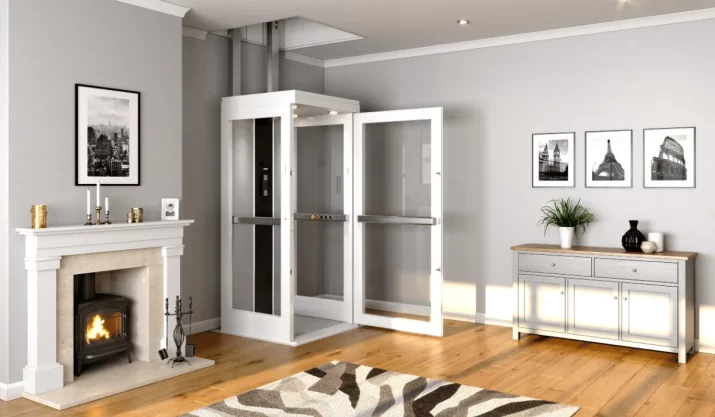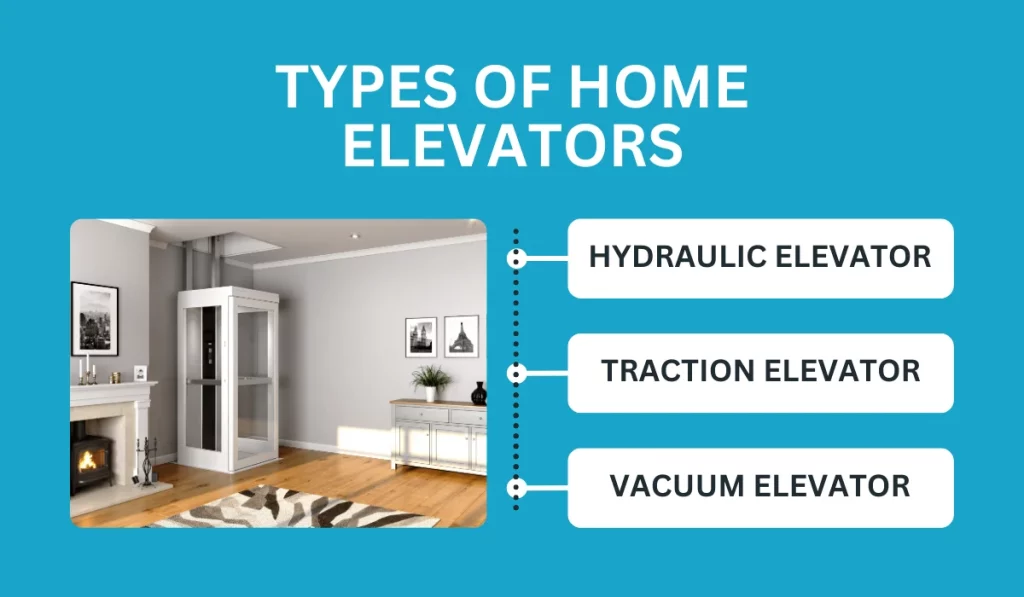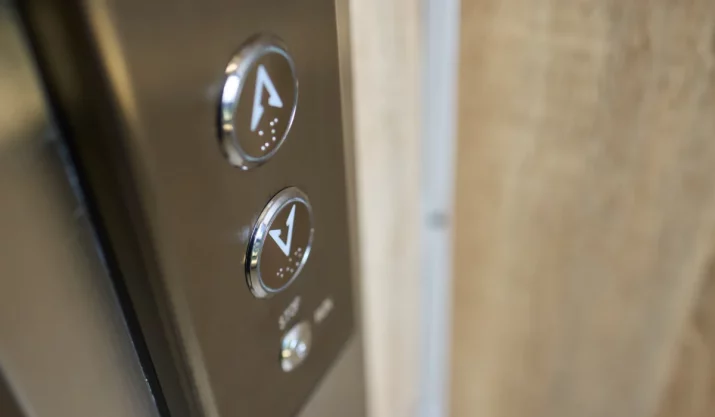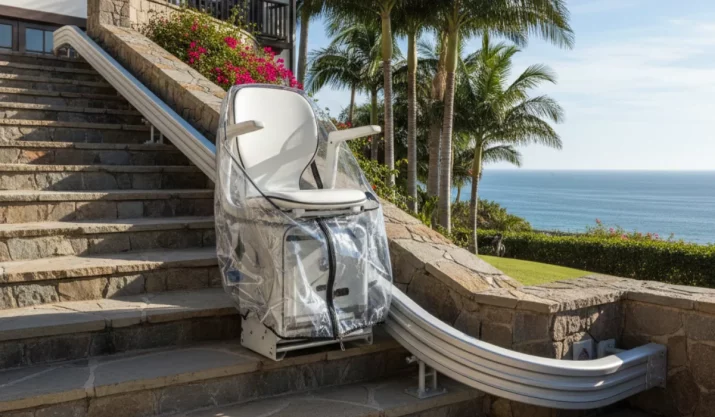How Much Does a Home Elevator Cost?

Table of Contents
Installing a home elevator enhances accessibility and convenience in multi-story homes for individuals of all mobility levels.
Costs may range from $30,000 to over $60,000, depending on the elevator type, customizations, and installation complexity.
Homeowners often install elevators to boost property value or address accessibility needs. Options include hydraulic, traction, or pneumatic systems.
Whether integrating into new construction or retrofitting, this guide explores vital cost factors to help you make an informed decision.
Key Takeaways
- The costs of home elevators vary by type and may range from $30,000 to $60,000.
- Design, materials, and technology also influence the home elevator costs and the number of floors served.
- Home elevator installation costs are affected by home structure, the number of floors, machine room requirements, elevator size, customization, site preparation, and labor.
- Regular maintenance, including inspections, cleaning, lubrication, and emergency system checks, is essential for safety and longevity.
- Budget-friendly alternatives, such as stairlifts, vertical platform lifts, Stiltz lifts, Bruno Connect lifts, and wheelchair lifts, provide accessible solutions without extensive modifications.
Why Consider a Home Elevator?
Installing a residential elevator is becoming an increasingly popular choice for homeowners.
Here’s a look at some compelling reasons for considering a home elevator:
| Reasons | Details |
| Convenience | Home elevators provide a seamless way to access different levels of a home, particularly for multi-story dwellings. |
| Accessibility | For individuals with mobility issues, an in-home elevator can mean the difference between utilizing the whole home or being confined to one level. |
| Accommodating Disabilities | Whether temporary or permanent, elevators offer those with limited mobility the ability to navigate their homes without barriers. |
| Home Value | Beyond practicality, adding an elevator cab can add value to your home, making it a worthwhile investment. |
Types of Home Elevators and Price Ranges

Like commercial elevators, installing a home elevator can be a significant investment. Residential elevator costs vary based on several factors, so you must make an informed decision.
Here’s what you need to know about the average cost of a home elevator.
Hydraulic Elevator
It utilizes a hoist mechanism, piston, pump system, and a separate machine room. It is known for its smooth ride and reliability.
- Cost Range: $30,000 – $50,000
- Cost Influencing Factors: Customizable design, high-end materials, and advanced technology.
Traction Elevator
Also known as a counterweight elevator, it employs a counterweight and pulley and requires no machine room. It is efficient and takes up less space.
- Cost Range: $30,000 – $45,000
- Cost Influencing Factors: Size of the cab, custom features, and choice of drive system.
Vacuum Elevator
Also known as a pneumatic elevator, it uses air pressure to move the elevator car. Has a clear, tube-like appearance and does not need a machine room.
- Cost Range: $35,000 – $60,000
- Cost Influencing Factors: Diameter of the tube, interior design, and additional floors served.
Additional Costs to Consider
Here’s a break down to the extra expenses you’ll need to factor in on top of the base price of your home elevator:
| Aspects | Details |
| Permits | Necessary for legal compliance; costs vary by location. |
| Home Modification Costs | Might include doorway enlargement or structural reinforcement. |
| Maintenance Costs | Regular servicing to ensure safety and longevity. |
| Machine Room Construction | Separate rooms are required for certain elevator types. |
| Emergency Phone Line | Optional but recommended for safety. |
| Installation Costs | Can be a significant part of the total expenses. |
Factors Influencing Home Elevator Installation Costs
Several distinct factors can influence the cost of installing a home lift. As potential buyers, you must consider factors such as your chosen type of residential elevator or your home’s structure.
Home Structure
Older homes might need more retrofitting to accommodate an elevator, which can increase installation costs.
On the other hand, new construction is often designed with elevator installation in mind, which may lower these costs.
Number of Floors
The travel distance between floors contributes to the cost. A two-story home often incurs fewer expenses than a home with multiple levels.
Machine Room
Traditional home elevators require a machine room, which increases their cost. MRL (Machine Room-Less) elevators can be less costly, as they don’t need this extra space.
Functionality
Basic models designed for limited use can be economical. Commercial-grade elevators designed for more frequent use or a higher weight capacity will be pricier.
Size and Customization Options
The price can vary depending on the elevator’s area in square feet and the level of customization—for aesthetics or special features. Larger elevators or those with unique design elements will typically increase costs.
Site Preparation
The final bill also includes the amount of site preparation necessary for the elevator work, such as excavation or structural reinforcement.
Labor Costs
The complexity of the installation has a direct impact on labor costs. Complex installations in tight spaces or requiring significant modifications to existing structures can drive up labor charges.
Installation and Maintenance
When considering a home elevator, attention to detail during the planning, installation, and maintenance stages can significantly impact both short-term and long-term costs.
Planning for a Home Elevator
With careful planning, you can mitigate unexpected lift costs and installation delays.
| Aspect | Recommended Action |
| Site Assessment | Have a professional assess your home’s structure to ensure it can support an elevator. |
| Choosing the Right Model | Consider your home’s space, design, and technical requirements to select an appropriate elevator type. |
| Obtaining Permits | Research local regulations and acquire the necessary permits to avoid legal complications and potential fines. |
The Installation Process
During each phase, you should expect professionals to require access to your homes and regular updates on progress.
Here’s how the process works:
- Initial Consultation: This stage establishes the project scope and timeline.
- Site Preparation: Home modifications might be needed to accommodate the elevator.
- Elevator Delivery: The components of the elevator are delivered to the site.
- Installation: Depending on the complexity, professional technicians will install the elevator, which might take several days to weeks.
- Inspection and Testing: The elevator is rigorously tested after installation to ensure functionality and safety.
Long-Term Maintenance Considerations
Regular maintenance of any type of elevator is crucial to ensure safety and longevity. Here are some aspects you should consider:
| Considerations | Recommended Action |
| Regular Inspections | Schedule annual inspections by a certified technician. |
| Cleaning | Routine cleaning is necessary to keep the elevator in good condition. |
| Lubrication | Regularly lubricate moving parts to prevent wear and tear. |
| Emergency Systems Check | Regularly test alarms and emergency communication systems. |
| Maintenance Budgeting | Set aside funds for potential repairs, which can cost a few hundred to a few thousand dollars. |
Budget-Friendly Alternatives
For those seeking alternatives to full-scale home elevators, consider these budget-friendly options that blend functionality with minimal disruption:
Stairlift
- Space-Saving Design: Stairlifts fit neatly alongside your existing staircase, making them perfect for homes with limited space.
- Adaptable: Whether your staircase is straight or gracefully curved, stairlifts can be tailored to match, offering a cost-efficient solution to mobility barriers.
Vertical Platform Lifts
- User-Friendly: Designed with wheelchair users in mind, these lifts provide an easy and safe way to move between floors.
- Simplified Installation: Unlike traditional elevators, vertical platform lifts offer a less invasive installation process, often not requiring major home modifications.
Stiltz Lifts
- Minimal Construction Required: These innovative lifts operate within their self-contained structure, significantly reducing the need for extensive construction work.
- Aesthetic Appeal: Stiltz lifts are quick to install and offer a modern, aesthetically pleasing alternative that can complement the interior design of any home.
Bruno Connect Lifts
- Design: Versatile and space-efficient design featuring acrylic panels and concealed hardware. Fits seamlessly into a modern aesthetic.
- Safety: This home elevator comes with advanced safety features, including in-cab controls and essential safety systems like an emergency phone and backup batteries.
Wheelchair Lift
- Robust Solution: Specifically designed to accommodate wheelchairs, these lifts provide a safe and reliable way to access different levels of your home.
- Flexible Installation Options: Wheelchair lifts can be installed indoors or outdoors, offering versatility to meet your home’s specific layout and design.
Financing Your Home Elevator
Investing in a home elevator can be a significant financial decision, so choosing an affordable financing option and a reliable company is crucial.
Options for Financing and Saving
As homeowners, you have several avenues to finance your home elevator, each with advantages.
| Financing Options | Description |
| Home Equity Loans | Tapping into home equity can lower interest rates for homeowners with substantial equity. |
| Personal Loans | Unsecured loans, while often at higher interest rates, don’t require you to pledge your home as collateral. |
| Manufacturer Financing Programs | Some home elevator companies offer financing plans, including deferred payments or lower rates. |
To save on the installation:
- Simpler Models: Opt for basic models without luxury features to reduce home elevator prices.
- Minimizing Customization: Custom work can increase prices; sticking with standard designs and features can lead to savings.






